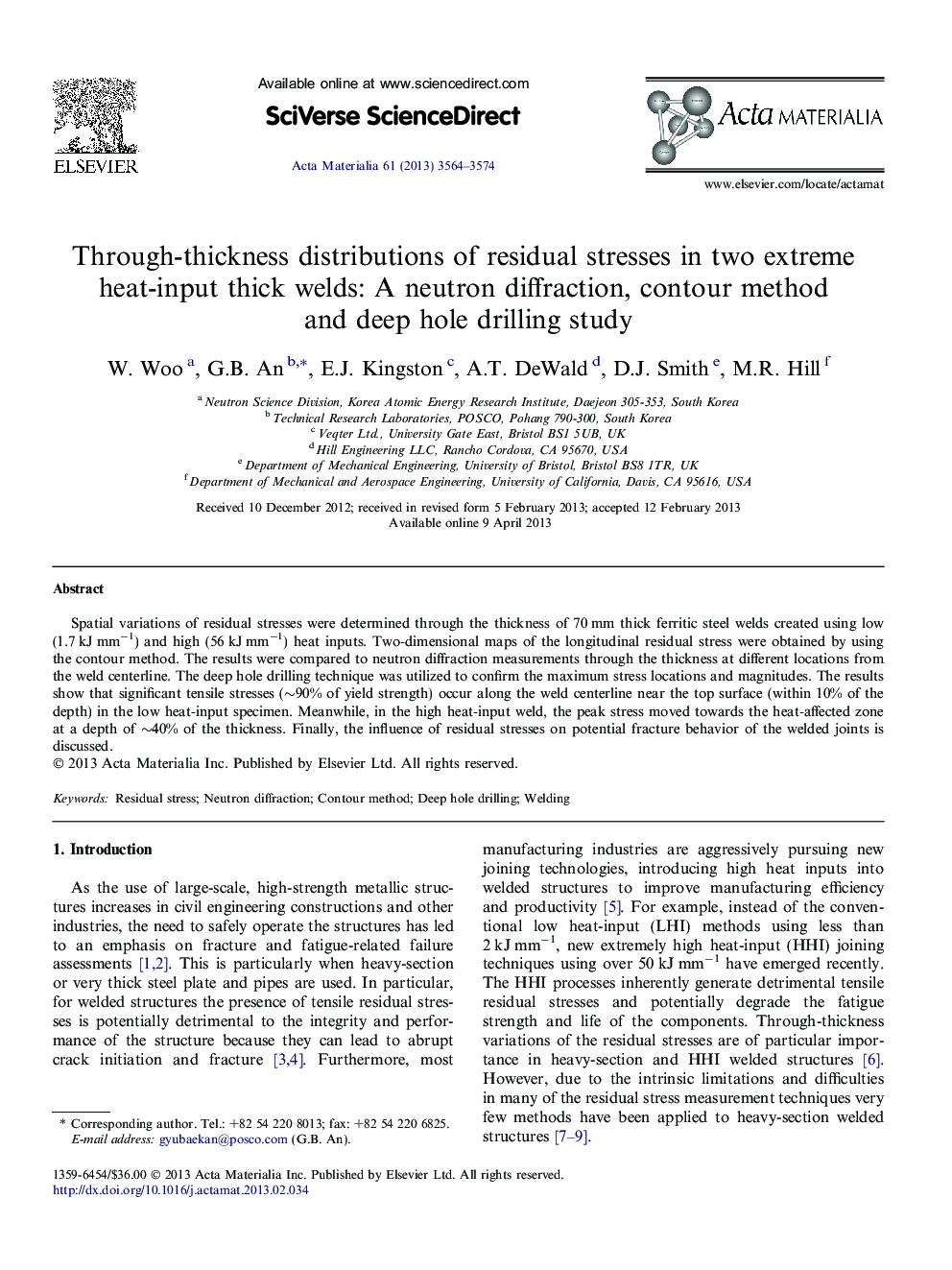| Article ID | Journal | Published Year | Pages | File Type |
|---|---|---|---|---|
| 1446102 | Acta Materialia | 2013 | 11 Pages |
Spatial variations of residual stresses were determined through the thickness of 70 mm thick ferritic steel welds created using low (1.7 kJ mm−1) and high (56 kJ mm−1) heat inputs. Two-dimensional maps of the longitudinal residual stress were obtained by using the contour method. The results were compared to neutron diffraction measurements through the thickness at different locations from the weld centerline. The deep hole drilling technique was utilized to confirm the maximum stress locations and magnitudes. The results show that significant tensile stresses (∼90% of yield strength) occur along the weld centerline near the top surface (within 10% of the depth) in the low heat-input specimen. Meanwhile, in the high heat-input weld, the peak stress moved towards the heat-affected zone at a depth of ∼40% of the thickness. Finally, the influence of residual stresses on potential fracture behavior of the welded joints is discussed.
